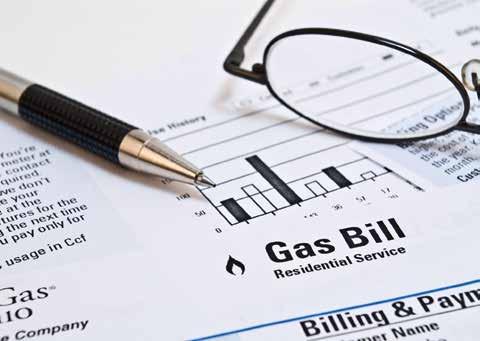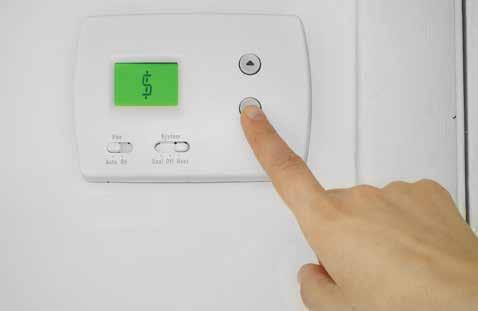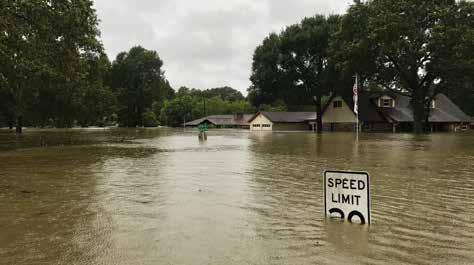
6 minute read
How Texas Energy Assistance Program Can Assist Propane Customers
‘Tis the season for high propane use, y’all! Texas’ cooler weather months are upon us, and not only will much more propane be used as Texans heat their homes, but it’s also the best time for lower-income customers to employ our state’s utility assistance program to help pay for a tank fill.
What is CEAP?
Advertisement
The Texas Comprehensive Energy Assistance Program (CEAP) is funded by the U.S. Health and Human Services Department’s Low Income Home Energy Assistance Program (LIHEAP). The purpose of CEAP is to provide energy assistance to income-eligible households. TDHCA administers the program through a network of 37 CEAP Subrecipients. The subrecipients consist of private nonprofit entities and units of local government. CEAP Subrecipients make energy payments for eligible households to energy companies through a vendor agreement with energy providers.
Eligible households may be assisted with Utility Assistance and Household Crisis Assistance benefits, which are the two CEAP assistance components. Benefits are determined on a sliding scale based on income, household size and Federal Poverty Income levels. The Household Crisis Component is designed to provide one-time energy assistance to households during a period of extreme temperatures or an energy supply shortage. A utility disconnection notice may constitute a Household Crisis. In some instances, Household Crisis funds can be used to assist victims of natural disasters.
In fiscal year 2019, almost $120.5 million was used to help 159,152 Texas households. For FY 2020, the CEAP has a budget of $163 million and last spring, due to CARES Act money awarded because of COVID-19, Texas received an additional $90 million.
Who is eligible?
The targeted beneficiaries of CEAP in Texas are households with an income at or below 150% of federal poverty guidelines, with priority given to aging Texans; persons with disabilities; families with young children; households with the highest energy costs or needs in relation to income (highest home energy burden); and households with high energy consumption.
Applicants can verbally report loss of job, income, or need due to sheltering-in-place or local restrictions from COVID- 19 that impact the household to a local CEAP branch caseworker in their local country.
The allocation formula for CEAP uses the following five factors and corresponding weights to distribute its funds by county: non-elderly poverty household factor (40%); elderly poverty household factor (40%); inverse poverty household density factor (5%); median income variance factor (5%); and weather factor (10%).
How does it work?
Customers apply for CEAP through their local community action agency, which processes their application, determines eligibility, and is authorized to provide utility assistance totaling up to $1,400 per year per household. The maximum possible annual Household benefit aggregate to $8,200.
“Here in Texas, we can help folks with
Program Year 2020 Income Limits for CEAP (Effective February 3, 2020)
Persons in 150% of Family/Household Federal Poverty Guidelines
1 $19,140 2 $25,860 3 $32,580 4 $39,300 5 $46,020 6 $52,740 7 $59,460 8 $66,180
For families with more than 8 people Add $6,720 for each additional person
Eligibility for CEAP is calculated at 150% of Federal Poverty Income Guidelines.
SOURCE: U.S Department of Health and Human Services Federal Poverty Guidelines https://aspe.hhs.gov/poverty-guidelines
only one bill a month, up to eight times a year, depending upon their situation,” explained Michael De Young, Division Director at the Texas Department of Housing and Community Affairs. “We don’t select which utility bill to pay per se; what we do is offer to pay the highest utility bill for that month, because that’s what will help the household the most. So, during the summer, it’s almost always going to be the electric bill. But during cooler months, especially if they have a propane tank that’s empty and needs to be filled, then the propane bill may be higher than the electric bill, so that would be their utility assistance for that month.”
One key objective of the program is to provide relief for lower-income disabled, elderly, and families with young children – the Texans who are most vulnerable, both physically and financially – from fluctuations in cooling and heating energy costs. Households with these kinds of at-risk members may be eligible for additional assistance to ensure their power stays connected and their health is protected. CEAP also offers extra help to eligible customers during severe weather, energyrelated crises, and fuel-supply shortages.
“Of course we’ll help in a crisis – which CEAP defines as a situation in which at least one household member would suffer seriously without utility assistance, because there is a shut-off notice or they have less than a ten-day supply of a delivered fuel source like propane,” De Young notes. “Customers can purchase up to 250 gallons of propane or suspend a shut-off; but under normal, non-crisis circumstances, each household can receive only two disconnect payments per year.”
Households in crisis can also use CEAP funding to help cover some energy equipment service and repair – up to $5,000 per year. But propane customers need to know, while tank pressure testing may be covered, repair or service of propane valves, lines, and tanks is not eligible for CEAP funding.
Why is the propane-use cycle important?
Because propane has a cycle of use in many homes – particularly where it’s the primary heating fuel – it’s important for those lower-income households to remember CEAP will pay only the month’s highest utility bill. So, if they want to make the most of their utility assistance,

then they should aim to fill their tanks – and seek help from CEAP – during the winter months.
“Much of how the program works has to do with when the customer is accessing it,” confirms De Young. “If you’re an electricity-only household, then it doesn’t really matter. But if you use propane for heat, then it can make a difference.”
What can you do to make the most of CEAP?
Local community action agencies are the hub of the CEAP system. For customers requesting help, these agencies are the ones who accept and process their applications, as well as distribute approved funds. And for energy providers – such as propane marketers – these agencies are the ones who can connect you with federal dollars.
“For suppliers who are interested in accessing CEAP funding, the key is to know your local community action agencies,” advises De Young. “You can’t receive a program payment from an agency until you’ve signed a CEAP vendor agreement – a legal document that says you will treat households utilizing CEAP exactly the same as your regular clients – with that local office.”
Step one is to identify which organizations in your service area administer CEAP funds. Go to the TDHCA website [www. tdhca.state.tx.us/texans.html], click the “Utility Bill Payment Help” button under “Home Expenses.” Type in the city or county you serve and click “Submit” – and information for the local community action agency will appear.
“Be proactive,” De Young urges. “Go by that local office, let them know you provide propane in these counties, and sign that vendor agreement. Build a relationship with those folks, so that the caseworker sitting across the desk from a lower-income client can say, ‘I know Pete over at Pete’s Propane; let’s give him a call and get a delivery to you ASAP.’”
On the other side of the equation, knowing the local agency that administers CEAP will also help you help your lower-income customers. Being able to refer someone in need to the proper agency that can assist them is not only great customer service, but also good for business.
“If a propane marketer has a current CEAP vendor agreement, then when they have a customer saying, ‘I need a propane fill, but I don’t have enough money,’ they can tell them, ‘You may be eligible for this program; call this agency and see whether you can get CEAP utility assistance,’” suggests De Young. “It should take only a day or two for them to process the application and gain approval, and then they’re both in business.”
Raising your profile within CEAP circles takes a little effort on the front end, but the payoff is the opportunity for underprivileged and vulnerable customers to have their propane tank filled once a year, and have the federal government help pay for it.






